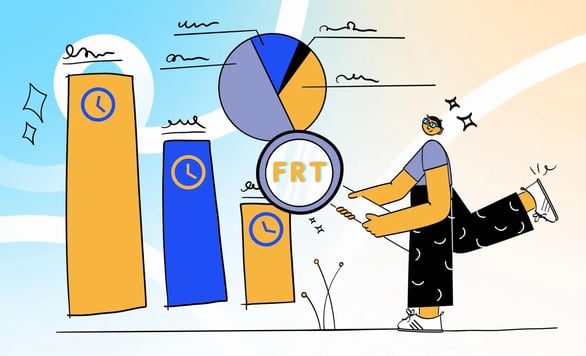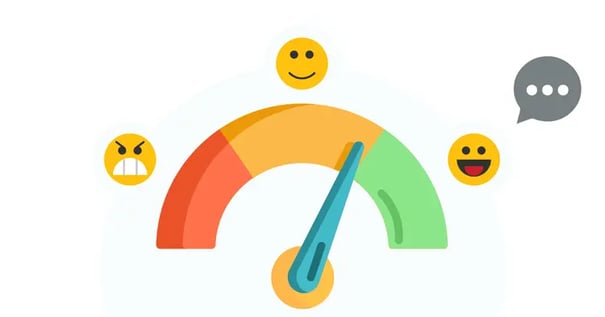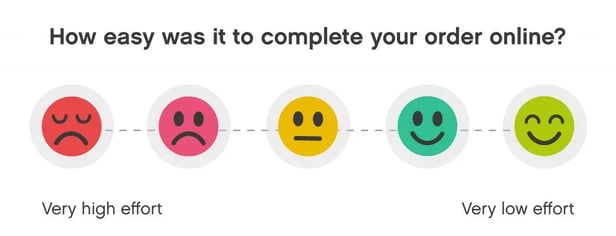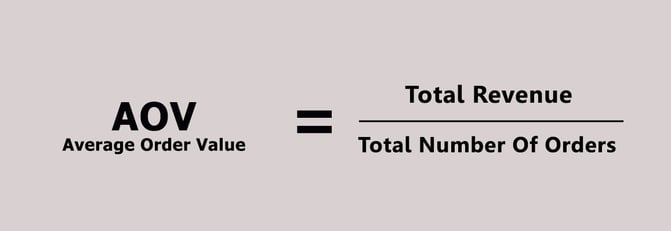8 E-commerce Customer Experience KPIs And Metrics For Optimized Performance
As competition in e-commerce is getting more intense, you have to do all that it takes to stand out in such a competition.
First things first, you will have to focus on providing a pleasant customer experience. A satisfied customer is more likely to return for repeated purchases and to spread positive word of mouth.
Yet, the challenge is how to measure customer experience. Some online stores argue that it’s hard to measure compared to sales, for example.
Therefore, in this article, we will tell you about e-commerce customer experience KPIs and metrics to utilize for your online store to identify its performance and work on any deficiencies.
They are an integral part of the performance of your e-commerce, so you don’t want to miss it.
eCommerce Customer Experience KPIs And Metrics
- Conversion Rates
- First Response Time
- Net Promoter Score
- Customer Satisfaction Score
- Customer Effort Score
- Repeat Customer Rate
- Average Order Value
- Number Of Support Tickets
KPIs and metrics are quantifiable measurements used to evaluate the performance of a certain business.
KPIs show how good you are at attaining your business goals, while metrics analyze the performance of business processes.
So, let’s discuss some e-commerce customer experience KPIs and metrics to start working on achieving your goals and business processes.
1- Conversion Rates
The first metric you should monitor is conversion rates.
Conversion rates are the percentage of people who completed a desired action compared to the total number of visitors.
Why to Track:
It’s necessary to track conversion rates as an important metric. They are a huge indicator of the performance of your e-commerce.
At the end of the day, customers won’t complete a desired action like a purchase or email subscription unless they are having a pleasant experience.
Therefore, if you have low conversion rates, you must pinpoint the causes behind this low rate. Use process inflow to examine at which stage shoppers leave your online store.
For instance, if you find high cart abandonment rates, it will be evident that the issue at your product page hinders conversion.
2- First Response Time
 Image source: fullview.io
Image source: fullview.io
People hate waiting, and online shoppers are no exception.
Hence, a crucial e-commerce customer experience KPI is the first response time.
First response time is concerned with how long it takes your customer service to reply to customers’ inquiries and questions. To calculate this KPI, you will have to gather all first response times divided by the total number of queries raised to reach an average.
Therefore, many online stores incorporate chatbots and live chat options to ensure shoppers get instant replies to their issues.
Why to Track:
The answer to this question is easy: tracking the first response time indicates the quality of service online shoppers will encounter later on.
Not to mention that a fast first response time builds credibility and trust, which is necessary for your online store. Tracking first response time enables your brand to identify the points of weakness and work on them.
Simply put, the faster you reply to shoppers’ inquiries, the more pleasant their experience is.
3- Net Promoter Score
Let’s agree that satisfied customers who encounter pleasant experiences are likely to recommend your store to their peers.
This is regarded as word-of-mouth marketing. Word-of-mouth marketing is a tactic where a brand encourages shoppers to share their experience with a certain product, hence encouraging their peers to make a purchase.
So, if you ever wonder if shoppers are going to recommend your brand or not, you have to focus on the net promoter score (NPS).
NPS is an e-commerce customer experience metric that calculates the number of customers who will promote and recommend your brand to their family and friends.
When gathering NPS, you have to ask your customers a very simple question: “How likely are you to recommend a brand to your family and friends”?
Why to Track:
Tracking NPS is an indicator of customer satisfaction. It’s a very easy metric to calculate, and it also shows your business's performance.
In addition, tracking NPS enables your e-commerce to identify the most loyal customers who are most likely to promote your brand. Hence, you can rely on them as your brand ambassadors. No one can promote your brand better than an already existing customer.
Also, you can nurture your loyal customers by creating loyalty programs.
Most importantly, tracking NPS will show deficiencies that prevent shoppers from promoting your brand. Thus, you will be able to work on such shortcomings.
4- Customer Satisfaction Score

A customer satisfaction score is one of the most important e-commerce customer experience KPIs and metrics.
Just think about it: ask them if you want to know a customer’s experience.
Yes, it’s that simple.
In the customer satisfaction score, you ask shoppers if they are satisfied with your products, services, shipping, and website. It provides your brand with an overall understanding of the complete customer experience.
So, from the total number of purchases, identify the satisfied ones to calculate a percentage.
Why to Track:
Tracking customer satisfaction scores is a key metric for interpreting e-commerce customer experience.
You have to ensure that your customers are satisfied. They are the key to building brand trust and loyalty. Hence, customer satisfaction scores are an optimal starting point.
5- Customer Effort Score

Customer effort score (CES) is the effort a shopper has to make to complete an action or a purchase. Customers may have some difficulties in navigating your website or completing purchases.
Therefore, a good customer effort score indicates a smooth and fast customer experience that requires minimum effort. As we always say, life is getting faster than ever. Hence, your online store has to be as efficient as possible.
To measure CES, you can ask them how much effort was needed to find what you were looking for. Also, leave a space for customers to mention the areas in which they exerted much effort.
Why to Track:
Getting answers to this question will enable your e-commerce to identify the aspects that need enhancements and work on them.
This is simply the key to success.
As a result, a higher CES shows that customers need lots of effort to complete an action. This will reflect lower sales and conversion rates.
In contrast, a lower CES leads to increased customer satisfaction and loyalty and gives you an edge over competitors.
So, tracking such an e-commerce customer experience metric is key to the growth of your online store.
6- Repeat Customer Rate
Repeat customer rate shows the number of customers who returned to your e-commerce for more purchases divided by the total number of buyers.
A repeated customer is a gem you should never take for granted.
Acquiring a new customer is costly and requires lots of effort. Hence, repeat customers are much cheaper and are more likely to spend more on your business as they already trust it.
Why to Track:
Tracking repeat customer rates is crucial for any online store. All metrics and KPIs are strongly related.
You won’t force customers to return for additional purchases. But you can provide them with an exceptional experience that increases customer satisfaction and makes them more inclined to return.
Hence, tracking repeat customer rates indicates customer satisfaction and loyalty as well. In addition, it will allow your online store to assess customers’ activity, preferences, and what makes them return and work on it.
Therefore, if there is a low customer return rate, you can work on offering discounts, coupons, or free shipping.
7- Average Order Value

Average Order Value (AOV) is a metric that calculates the average amount of money customers spend on every order.
You got that right.
The higher the AOV, the more customers have a pleasant experience and add more items to their carts. Hence, it’s one of the most important e-commerce customer experience metrics and KPIs.
Why to Track:
There are many reasons behind tracking AOV. For instance, you need to track it to assess the effectiveness of your efforts to upsell and cross-sell.
Also, it enables your e-commerce to examine buyers’ behaviors and activities, which will reflect in your overall marketing efforts.
Ultimately, higher AOV means more sales. So, tracking this metric is necessary to maximize sales.
8- Number Of Support Tickets
The number of support tickets indicates the number of queries your customer service receives over a certain period of time.
A reasonable number of support tickets is undoubtedly acceptable. However, if the number is accelerating with high rates, this means many shoppers are having problems with your online store.
Why to Track:
A large number of support tickets means there is a problem with usability, products, shipping, etc. It alerts online stores of an issue they might not be noticing.
Hence, paying close attention to the number of queries is needed to work on deficiencies and weaknesses.
Final Thoughts
The success of your e-commerce is strongly linked with providing a remarkable customer experience.
So, we provided you with eight e-commerce customer experience KPIs and metrics to start from. Calculating these metrics and KPIs will show the performance of your e-commerce to be on the right path.
For extra assistance, we encourage you to check out Converted.In
It is a marketing automation tool that will assist in delivering a premium experience to your customers.
Through its dynamic ad automation, personalized product recommendations, and email marketing, your customers will have an optimal shopping experience.
Look no further and book your demo now!
 By
By


